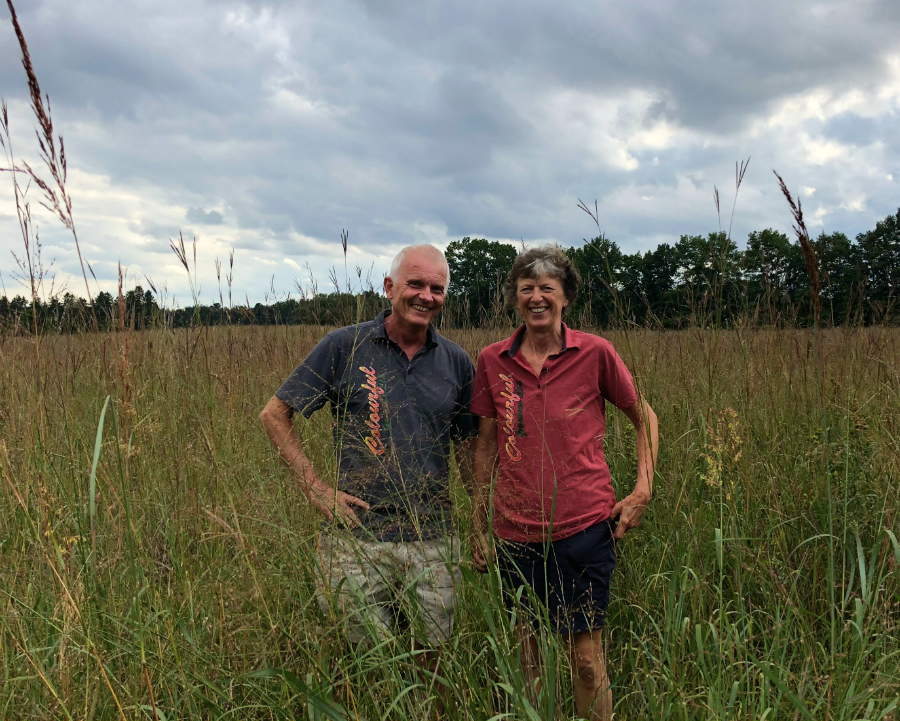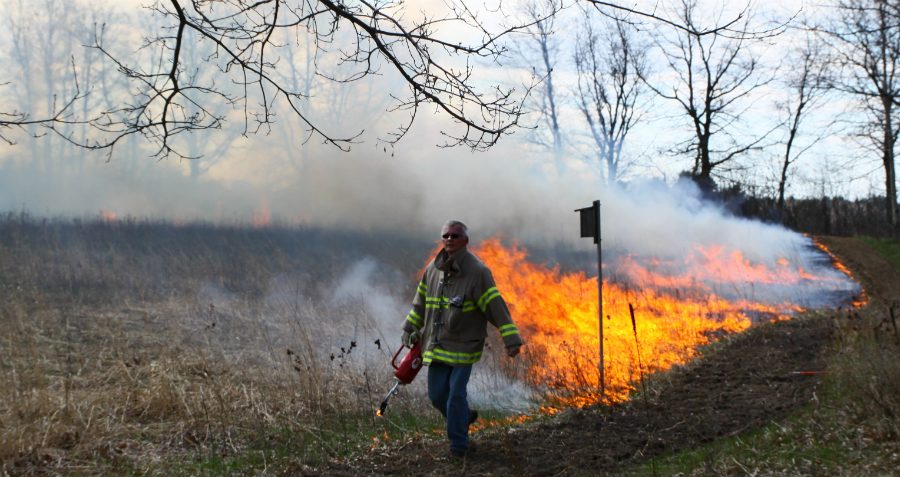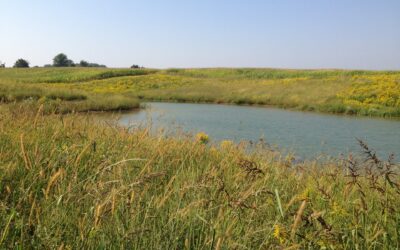Meet dedicated ALUS Norfolk participants Clen and Angelle Van Kleef

ALUS Norfolk participants Clen and Angelle Van Kleef are justifiably proud of their ALUS projects, including this 12-acre swath of tallgrass prairie that they’ve been stewarding since 2008. (Photo: Stephanie Drayer)
ALUS Norfolk participants Clen and Angelle Van Kleef are justifiably proud of their ALUS projects, including a beautiful, 12-acre swath of tallgrass prairie that they’ve been stewarding since 2008.
“We believe that a company can do good while also doing good business; ALUS is an important part of that effort,” said the Van Kleefs, who run Colourful Gardens Ltd., a 48-acre farm and greenhouse operation growing hibiscus and bromeliads in Simcoe, Ontario.
They had been running a hibiscus greenhouse in the Netherlands until 1999, when they took their two kids to Canada. They took some time to get to know their new landscape, then partnered with ALUS in 2008 to repurpose the unused portions of their farm for habitat restoration.
“We want to live in a responsible way, respecting the natural environment,” said Clen, “and we have incorporated some of our values into the way we run our greenhouse: Our greenhouses create a carbon footprint; ALUS helps offset that footprint.”
The Van Kleefs have since enrolled 16 acres in ALUS, including tallgrass prairie and black oak savannah grasslands, as well as wetlands and woodlands where many native plant and animal species can thrive.
Their tallgrass prairie and black oak savannah plantings showcase native flowers and deep-rooted grasses, such as big bluestem, to sequester carbon, control erosion, support pollinators, and provide habitat for wildlife including pollinators, deer, turkeys and other grassland birds.

Every few years, Clen Van Kleef burns this ALUS project to the ground! But don’t worry, it’s a recommended part of the maintenance routine for tallgrass prairie. Prescribed burns keep weeds and woody species from invading the native grassland, increase soil fertility, and reduce build-up of dead plant material.
Every few years, the Van Kleefs burn sections of their tallgrass prairie projects to the ground as part of the maintenance strategy—controlled burns don’t damage the deep-rooted native grasses or black oaks, but they do control invasive weeds and woody species that would otherwise invade the native grassland.
The burns also reduce build-up of dead plant material, which can become a fire risk if uncontrolled. Charred plant matter turns into a rich fertilizer, while blackened soil absorbs sunlight, warmed earth encourages seed germination.
The Van Kleefs are so committed to maintaining their projects that they became certified to assist with tallgrass prairie burns on their property and other ALUS Norfolk participant farms.
“Clen and Angelle are incredibly dedicated land managers. They devote so much time and energy to maintaining their ALUS projects,” said Stephanie Drayer, ALUS Norfolk’s Program Coordinator.
They are also committed to working with ALUS-related researchers, including Dr. Andrew McDougall’s team at the University of Guelph and Pollination Canada, who have provided nesting structures for bees.

Native plants feed native bees! This bumblebee is enjoying a Dwarf Blazing Star (Liastris cylandracea). Clen and Angelle Van Kleef maintain excellent habitat for pollinators, deer, turkeys and other grassland birds in this tallgrass prairie ALUS project. (Photo: Clen Van Kleef)
They have an impressive Carolinian forest restoration project for which they received the Carolinian Conservation Award in 2014, but have also reforested some sections of their land with native trees through ALUS. These projects provide wildlife habitat, store carbon, help control soil erosion and help to link disjointed parcels of forests across the country.
They also have wetland projects intended to store water, mitigate droughts and floods, filter nutrients to keep the water clean, sequester carbon, protect wildlife and many more ecosystem services.
“ALUS gives marginal land, like abandoned fields, a purpose. And it gives us the opportunity to stay flexible with our land,” says Angelle. “It’s a great combination of economics and environment: Everybody wins!”



